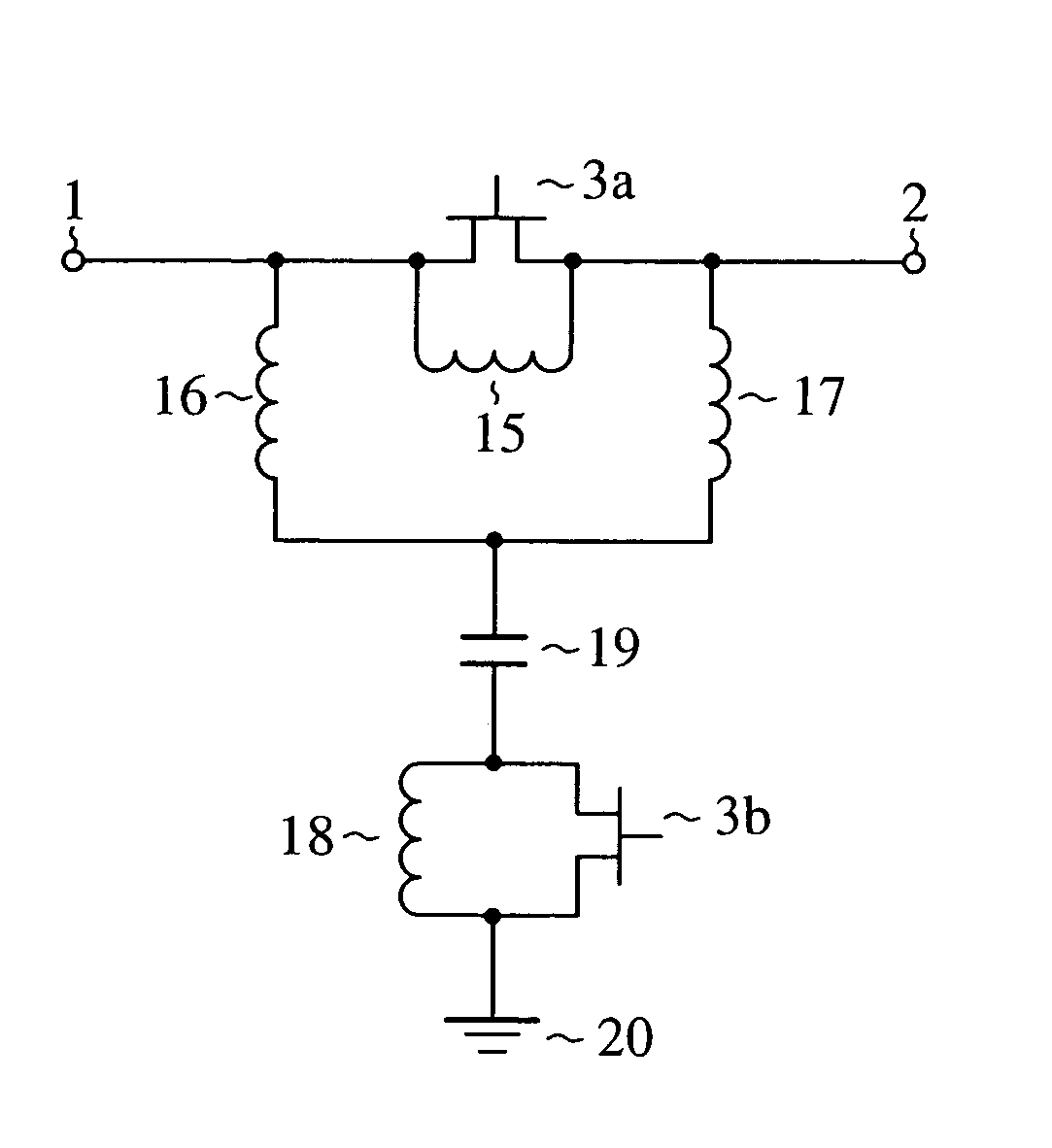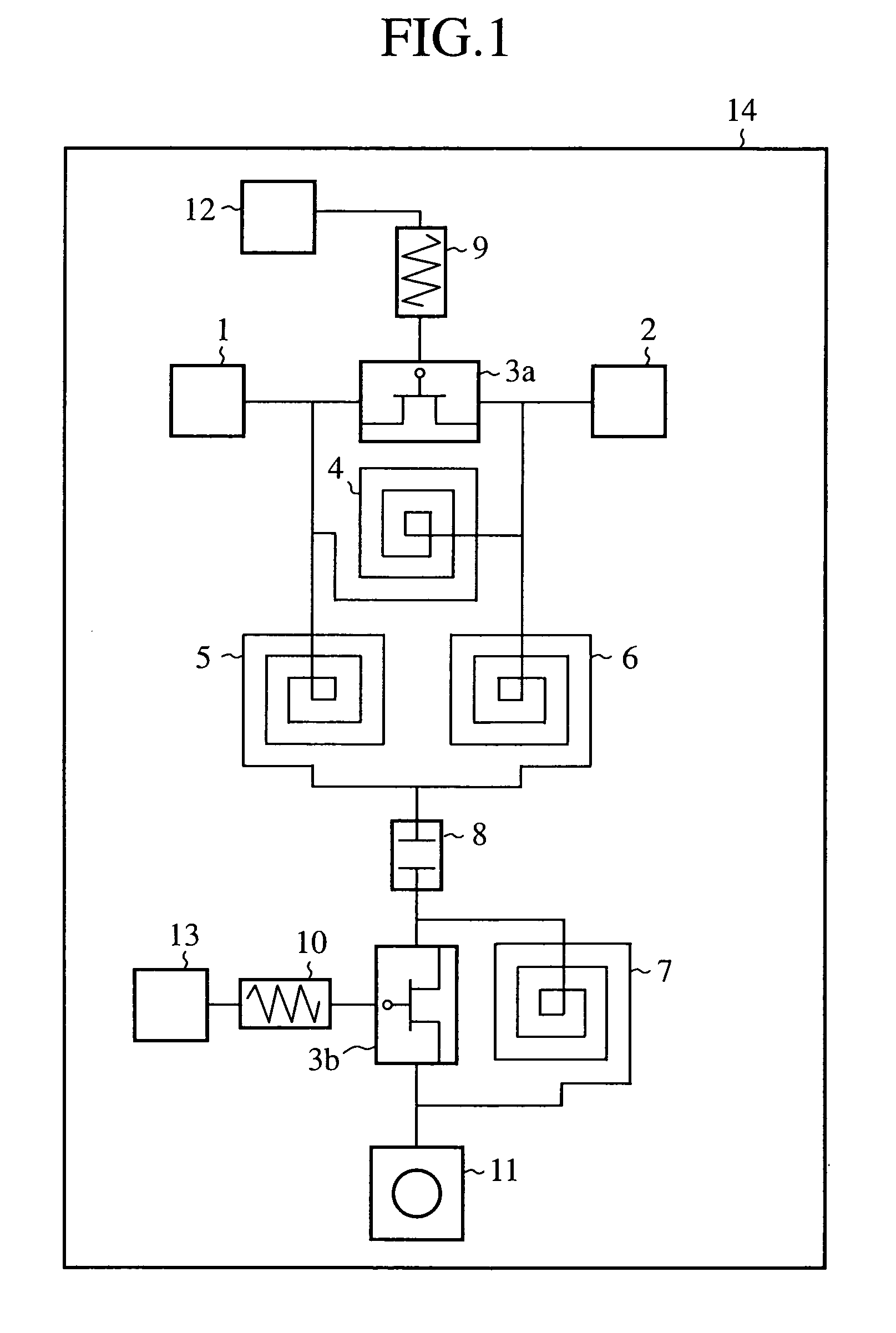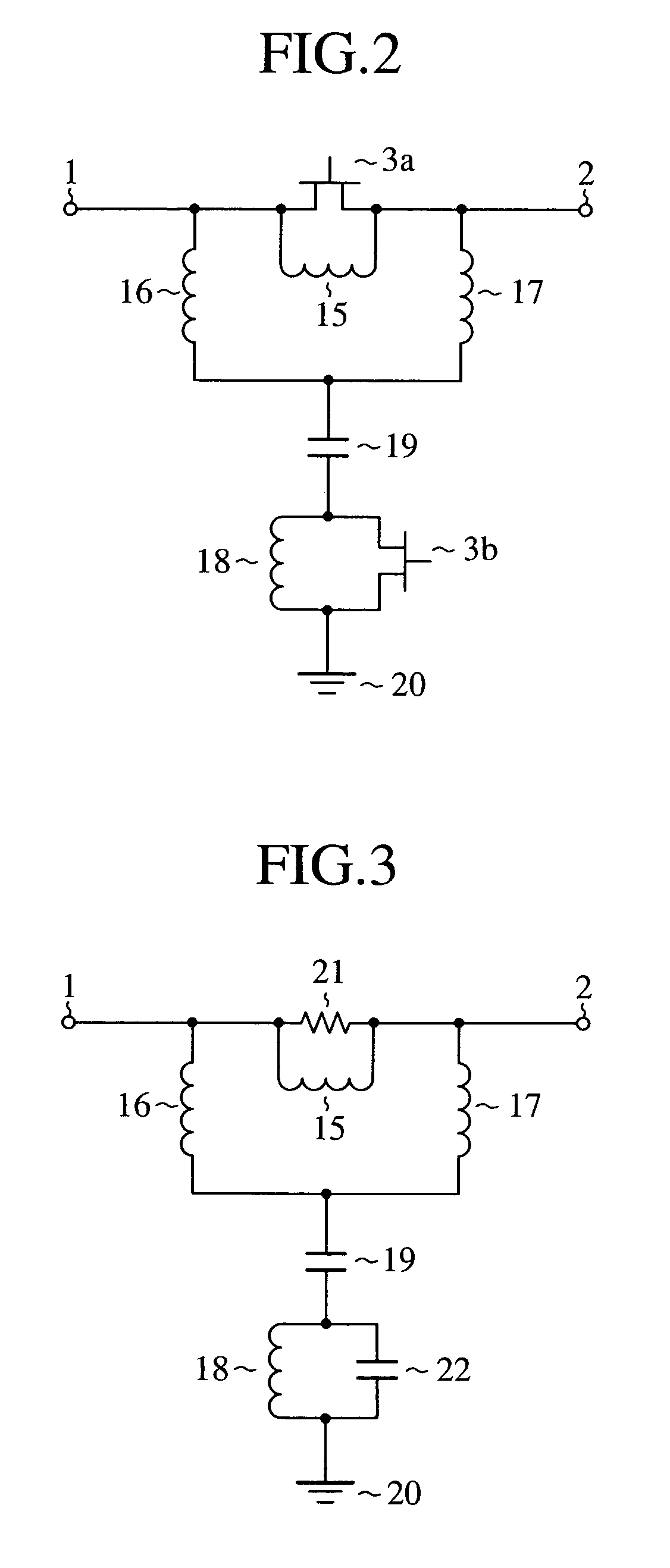Phase-shifting circuit and multibit phase shifter
a phase shifter and circuit technology, applied in waveguide devices, network simulating reactances, waveguide type devices, etc., can solve problems such as circuits with a problem of increasing their size, and achieve the effects of reducing the size of inductors, miniaturizing circuits, and low loss
- Summary
- Abstract
- Description
- Claims
- Application Information
AI Technical Summary
Benefits of technology
Problems solved by technology
Method used
Image
Examples
embodiment 1
[0042]FIG. 1 is a circuit diagram showing a configuration of the phase-shifting circuit of an embodiment 1 in accordance with the present invention.
[0043]In FIG. 1, the phase-shifting circuit is formed monolithically on a semiconductor substrate 14. It is configured in such a manner that a parallel circuit (first parallel circuit) composed of an FET (first switching element) 3a and a spiral inductor (first inductor) 4 is connected across a high frequency signal input terminal 1 and an output terminal 2, and that the FET 3a has its gate supplied with a first control signal from an input terminal 12 via a resistor 9. In addition, a series circuit composed of a spiral inductor (second inductor) 5 and a spiral inductor (third inductor) 6 is also connected in parallel with the parallel circuit. The point of connection between the spiral inductor 5 and spiral inductor 6 is connected to a first terminal of an MIM capacitor 8. Between a second terminal of the MIM capacitor 8 and a through h...
embodiment 2
[0052]FIG. 5 is a circuit diagram showing a configuration of the phase-shifting circuit of the embodiment 2 in accordance with the present invention. In FIG. 5, the same or like portions to those of FIG. 2 are designated by the same reference numerals, and duplicate explanation will be omitted basically. The configuration of the phase-shifting circuit includes an FET (third switching element) 25 in place of the capacitor 19 of FIG. 2.
[0053]The FET 25, which operates as a switch for switching the ON / OFF state, carries out the operation in the same manner as the FET 3a and FET 3b in response to the control signal.
[0054]Next, the operation will be described.
[0055]When the control signal sets the FET 3a at the ON state, the FET 3b at the OFF state and the FET 25 at the ON state, the phase-shifting circuit of FIG. 5 is considered to become the equivalent circuit as shown in FIG. 6. In FIG. 6, the same or like components to those of FIG. 3 are designated by the same reference numerals. He...
embodiment 3
[0061]FIG. 8 is a circuit diagram showing a configuration of the phase-shifting circuit of an embodiment 3 in accordance with the present invention. In FIG. 8, the same or like portions to those of FIG. 2 are designated by the same reference numerals, and duplicate explanation will be omitted basically. The configuration of the phase-shifting circuit replaces the parallel circuit composed of the inductor 18 and FET 3b of FIG. 2 by only the FET 3b (second switching element).
[0062]Next, the operation will be described.
[0063]When the control signal sets the FET 3a at the ON state and the FET 3b at the OFF state, the phase-shifting circuit of FIG. 8 can be considered to have an equivalent circuit as shown in FIG. 9. In FIG. 9, the same or like components to those of FIG. 3 are designated by the same reference numerals.
[0064]In the circuit of FIG. 9, the combined capacitance of the capacitor 19 and OFF capacitance 22 is set in such a manner to become nearly an open state. Here, since the...
PUM
 Login to View More
Login to View More Abstract
Description
Claims
Application Information
 Login to View More
Login to View More - R&D
- Intellectual Property
- Life Sciences
- Materials
- Tech Scout
- Unparalleled Data Quality
- Higher Quality Content
- 60% Fewer Hallucinations
Browse by: Latest US Patents, China's latest patents, Technical Efficacy Thesaurus, Application Domain, Technology Topic, Popular Technical Reports.
© 2025 PatSnap. All rights reserved.Legal|Privacy policy|Modern Slavery Act Transparency Statement|Sitemap|About US| Contact US: help@patsnap.com



